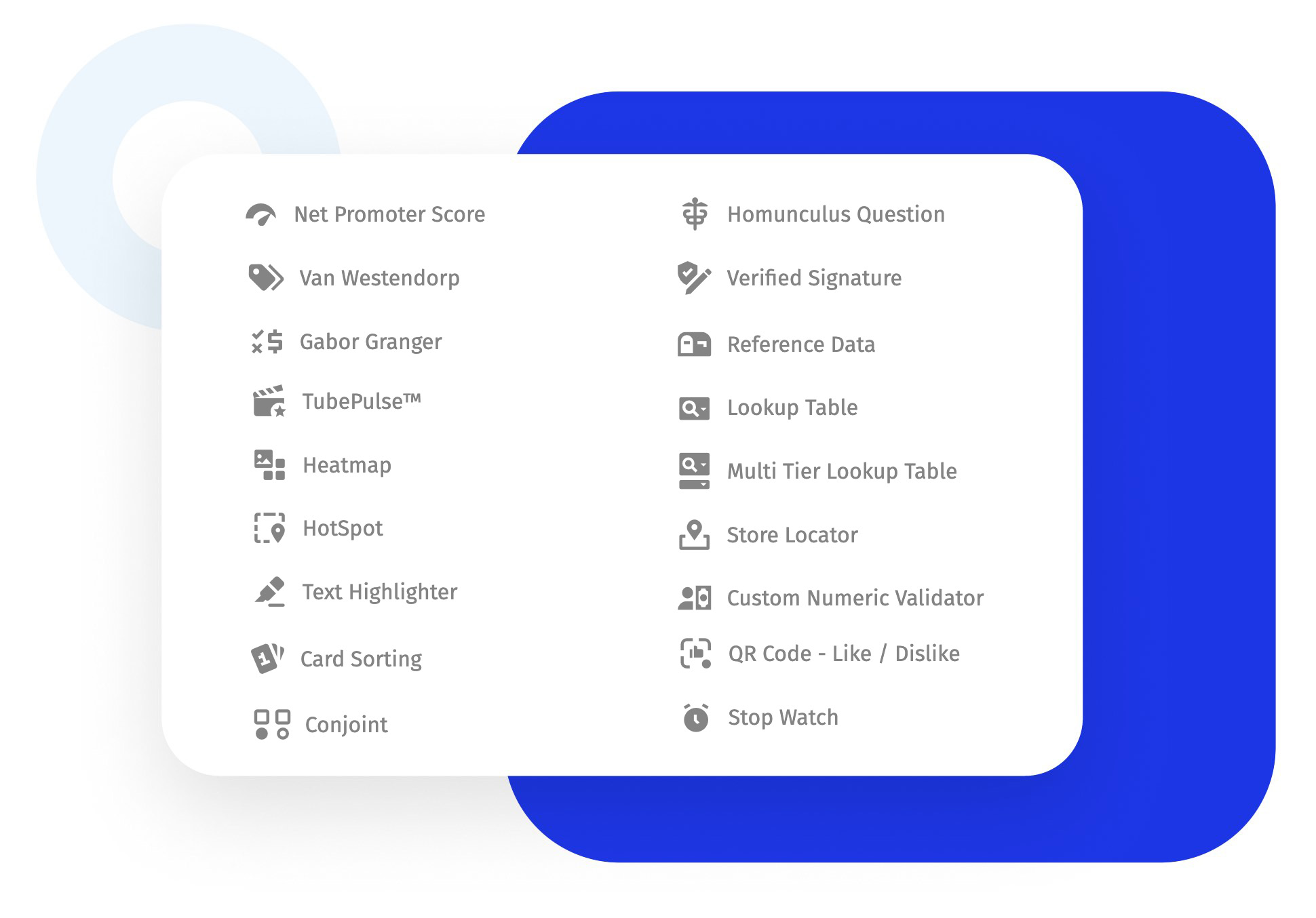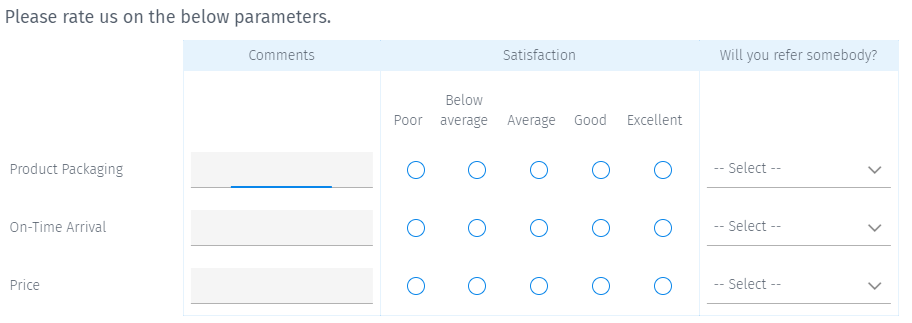QuestionPro offers to add below basic question types in the flex matrix survey question.
Single-select
Multi-select
Text input
Numeric text input
Rank order
Dropdown menu
Rating scale
Numeric slider
Thus, a flex matrix appears to be a single question but is a group of many questions. It makes the questionnaire compact and takes less time to complete the survey.
Flex matrix or complex grid question in surveys
Survey creators can add questions as sub-topics and their rating scale as rows and columns respectively. Because they combine multiple question types, data analysis is different from the usual questions. It needs a detailed analysis of the responses collected by various layers of questions.
In such cases, inclusive analytics may not be enough. Market researchers need to dig deeper and analyze data in conjunction with other answer items. Organizations that employ massive hardware and software infrastructure often combine data from multiple sources to get a holistic view. Similarly, in market research, when data from various areas or topics are combined, it gives analysts and researchers a better perspective of their target audience.
Flex matrix question helps market researchers view their respondents' preferences and feedback in detail while connecting multiple dots.
Example of a flex matrix or a complex grid in surveys
Consider an e-commerce company that has hosted an online survey on its website. Whenever customers receive a package, they scan the QR code and get redirected to the customer satisfaction survey.
In the below example of a flex matrix, the survey creator has enabled the customers to share their experience in multiple ways. Also, in case the customers don't want to leave detailed comments, they can just leave their feedback in terms of their satisfaction levels.

Uses of a flex matrix question in surveys
Competitor analysis: Respondents can be shown different brands as rows and asked to rate them. Based on their feedback, market researchers can analyze how consumers perceive each brand. They can also compare the relative strength of different brands.
Nested questions: Instead of creating multiple questions, survey creators can nest them under the same question. With different input types allowed as the columns, market researchers can ask different sub-questions for the same topic.
Advantages of a flex matrix survey question
Saves space: Complex grid or flex matrix saves considerable space when it comes to making short questionnaires.
Better respondent experience: Respondents don't have to spend much time reading questions again and again for the same set of topics. Also, as the length of the questionnaire gets reduced, respondents feel that it is not a lengthy survey and so tend to complete the survey. It, in turn, increases the survey completion rate.
Detail insights: Organizations and market researchers can collect a wide range of data for each sub-topic. It allows them to gain a deeper understanding of the preferences, choices, and likes of their target audience.
Flexibility: Survey creators can choose from different question types and create a question. It gives the flex matrix a unique capability to be used in the surveys. No other question type can combine various types of questions. It makes the job of survey makers easy.
How to use a complex grid or flex matrix in your surveys?
To learn how to use this survey feature, check out our help file on the Flex Matrix question.
Survey Software Easy to use and accessible for everyone. Design, send and analyze online surveys.
Research Suite A suite of enterprise-grade research tools for market research professionals.
Customer Experience Experiences change the world. Deliver the best with our CX management software.
Employee Experience Create the best employee experience and act on real-time data from end to end.






